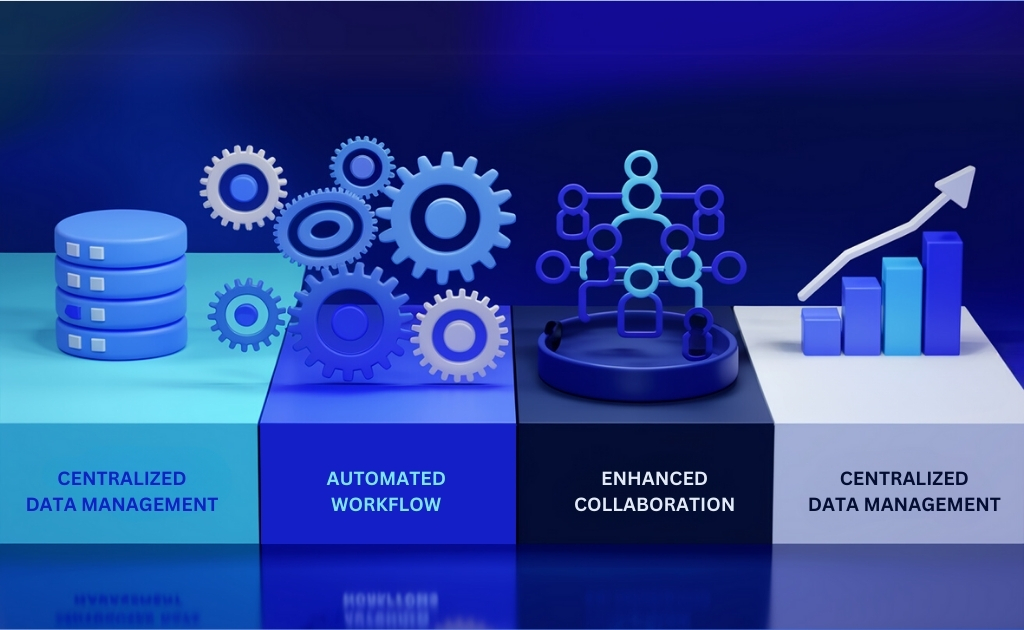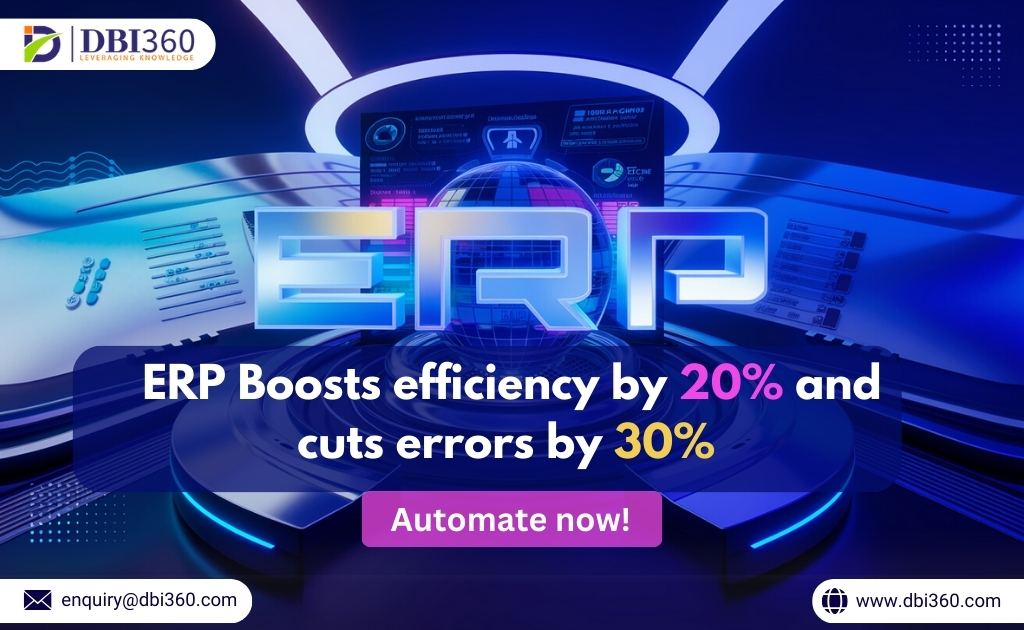Imagine this: your company’s operations are spread across multiple departments, each using its own tools, processes, and systems. Sales is working on one platform, finance on another, and inventory is tracked manually in spreadsheets. The result? Time wasted in transferring data, miscommunications, and costly errors. This disjointed setup might sound all too familiar to many businesses. But what if one system could streamline all these operations under a single umbrella?
This is where Enterprise Resource Planning (ERP) Systems shine. By integrating workflow automation software, ERP systems are transforming how businesses operate, automating repetitive tasks, improving collaboration, and increasing efficiency. Let’s dive into how these systems are changing the game for businesses worldwide.
What Are Enterprise Resource Planning Systems?
Enterprise Resource Planning Systems (ERP) are centralized platforms that integrate a company’s core business processes, such as inventory management, finance, procurement, human resources, and customer relationship management. By connecting all these functions, ERP systems eliminate silos and create a seamless flow of data across departments.
When combined with workflow automation software, ERP systems go a step further, automating manual tasks and creating consistent workflows. From generating invoices to managing inventory and automating approvals, ERP with workflow automation saves time, reduces errors, and optimizes resources.
Statistical Insight: According to Gartner, businesses using ERP systems with workflow automation experience a 20% increase in overall operational efficiency and reduce manual errors by 30% .
How ERP Systems Improve Workflow Automation Efficiency
1. Centralized Data Management
One of the biggest advantages of ERP systems is their ability to centralize data. Instead of maintaining separate databases for finance, HR, and inventory, ERP systems consolidate all information into a single platform.
This centralization enhances workflow automation by ensuring that all departments are working with real-time data, eliminating the need for redundant data entry.
Example: A manufacturing company reduced its time spent on monthly reporting by 50% after integrating an ERP system that automated the data collection process from all departments.
2. Automated Workflows Across Departments
With built-in workflow automation, ERP systems enable businesses to create automated processes for tasks like:
- Generating purchase orders
- Tracking inventory levels
- Approving leave requests
- Processing invoices
These systems allow managers to set up predefined triggers, ensuring that tasks move from one stage to the next without human intervention.
Real-World Case: A retail business automated its inventory restocking process with an ERP system. When inventory fell below a certain threshold, the system automatically generated and sent purchase orders to suppliers. This reduced stockouts by 35%.
3. Enhanced Collaboration
ERP systems foster collaboration by providing a unified platform where all teams can access and update information in real time. Workflow automation ensures that tasks are assigned to the right team members and deadlines are met without manual follow-ups.
Statistical Insight: Businesses using ERP systems report a 25% improvement in cross-departmental collaboration, according to a recent study by Deloitte.
4. Scalability for Growing Businesses
As businesses grow, managing workflows manually becomes increasingly complex. ERP systems with automation capabilities scale effortlessly, accommodating additional users, processes, and departments. They ensure that workflows remain efficient even as the organization expands.
Example: A logistics company expanded from 50 to 200 employees while maintaining the same operational efficiency by leveraging the scalability of an ERP system.

Key Features of Workflow Automation in ERP Systems
1. Automated Notifications and Alerts
ERP systems send automated reminders and alerts to stakeholders, ensuring that tasks are completed on time. For example, they can notify the finance team when an invoice is due or remind HR about upcoming employee appraisals.
2. Customizable Workflows
Modern ERP platforms allow businesses to customize workflows according to their unique needs. Whether it’s multi-level approval processes or department-specific workflows, customization ensures that the software aligns with the business model.
3. Real-Time Reporting
Workflow automation software generates real-time reports, providing insights into task progress, bottlenecks, and overall efficiency. This helps managers make informed decisions and identify areas for improvement.
4. Seamless Integration with Existing Tools
ERP systems integrate with tools like CRM software, accounting platforms, and project management apps, creating a unified ecosystem that enhances workflow automation.
Advantages of Combining ERP Systems with Workflow Automation
1. Improved Accuracy
By automating data entry and task management, ERP systems reduce errors, ensuring that workflows are consistent and reliable.
2. Faster Turnaround Times
Automation eliminates delays caused by manual processing. Tasks like approvals, invoicing, and reporting are completed in a fraction of the time.
3. Cost Savings
ERP systems help businesses save money by reducing the need for manual labor, minimizing errors, and streamlining operations.
Statistical Insight: Companies adopting ERP systems save up to 20% on operational costs, according to a report by Software Advice.
4. Better Compliance
Workflow automation ensures that businesses adhere to regulatory requirements by automating compliance-related tasks like tax calculations and audit trails.

Choosing the Right ERP System with Workflow Automation
Selecting the right ERP system is critical to achieving workflow automation efficiency. Here’s what businesses should look for:
1. Scalability
Choose a system that can grow with your business and accommodate increasing demands.
2. Ease of Integration
Ensure that the ERP system integrates seamlessly with your existing tools and software.
3. Customizability
Opt for a platform that allows you to customize workflows to suit your specific business needs.
4. Vendor Support
Look for vendors that offer robust customer support, training, and regular updates to the software.
Examples
ABC Electronics, a mid-sized company, faced challenges with manual workflows that slowed down their order processing and inventory management. After implementing an ERP system with workflow automation, they achieved:
- A 40% reduction in order processing time
- A 25% increase in inventory accuracy
- Real-time updates on product availability for the sales team
This transformation not only improved their operational efficiency but also enhanced customer satisfaction.
Future Trends in ERP and Workflow Automation
1. AI-Powered ERP Systems
Artificial Intelligence (AI) will enhance workflow automation by predicting workflow bottlenecks and suggesting optimizations.
2. IoT Integration
The Internet of Things (IoT) will enable ERP systems to gather real-time data from devices and automate workflows like inventory restocking.
3. Mobile-First ERP Solutions
Mobile-friendly ERP platforms will allow employees to access workflows and update tasks on the go, improving flexibility.
Conclusion
Enterprise Resource Planning Systems are more than just tools—they’re enablers of efficiency, collaboration, and growth. By combining ERP with workflow automation software, businesses can eliminate manual processes, reduce errors, and scale operations effortlessly.
As companies embrace digital transformation, investing in ERP systems with workflow automation isn’t just a smart move—it’s a necessity. Whether you’re a small business or a large enterprise, the right ERP system can be the catalyst for sustained success. Ready to take your operations to the next level? Start exploring ERP solutions today!

